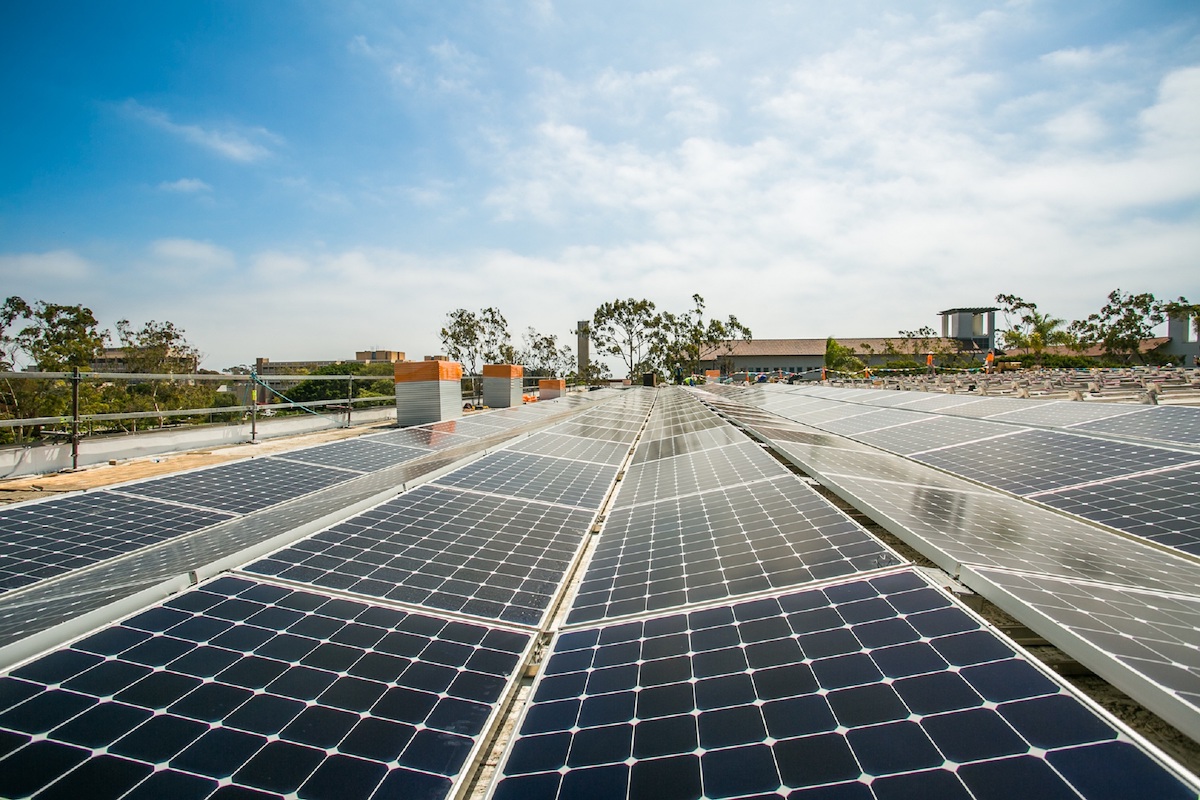No More Rooftop Solar?
Utilities Want to Pay Homeowners Less for Generating Power

There’s a battle brewing right now in our state over who owns the sun. Is it the sole property of California’s major utilities, or do each of us have the right to capture its energy to electrify our homes if we wish?
Long derided by these quasi monopolies as hippie pipedreams, the solar cells that compose solar electric panels have now become the cheapest generators of electricity throughout the world. In contrast to every other power source, owing to their modular nature, solar-generating systems can be placed onsite wherever electricity is needed and tailored to meet the needs of each user. Combined with state-of-the-art batteries and other semiconductor-run equipment, the use of solar radically changes the relationship between us and the utility — from total dependence on distant, huge power stations to a two-way street with each of us becoming a producer. Historically, utilities have found this equal relationship a bitter pill to swallow.
Now they wish to spit out this pill once and for all by monopolizing all solar generation through the elimination of the rooftop choice.
For decades, the State of California has acted as referee in this contentious war of utilities versus home producers. A system was established called net metering where the local generator could sell his or her excess electricity to the utility at a fair price and then buy it back at the same price when the sun was not shining.
Net metering has made solar a success story. In 2010, only 20,000 households had participated; last year, 1.3 million have enrolled. I personally participated in this growth by helping to advise UC Santa Barbara as it began its solar program in 2006. That program bloomed from a mere 60 watts to more than six million watts of installed capacity made possible by net metering, which compensates for the hefty price of installing solar panels.
At $8 per kilowatt of rooftop solar, that could add up to $40-$48 per month for the average 5-6 kilowatt system, according to Sean Gallagher with the Solar Energy Industries Association, and eat up the savings of installing the solar array, to accomplish the utilities’ objective — owning the sun.
To reach California’s reduction of carbon dioxide, rooftop solar offers many advantages over the large-scale solar plants which with the utilities wish to replace it. Installation is much quicker, taking only months. It reduces the power lost along miles of transmission lines. It also avoids encroaching on valuable lands required by agriculture or wildlife, which large-scale solar will do because no one has ever considered rooftops an endangered land space. In fact, maximizing rooftop installations will free up almost 645,000 acres of land that would otherwise be taken up by commercial solar. Additionally, as rooftop solar produces electricity where it is consumed, the need for transmission infrastructure is reduced, saving money as well as reducing the threat of encroaching on farmlands and ecosystems.
With the rise of electric vehicles, owners of rooftop systems with storage can become their own filling stations, pumping solar-produced electrons into their cars at night, becoming owner-run filling stations, and denying a lucrative business for utilities. If the utility companies succeed in eliminating rooftop solar, they would become the sole fuel providers of the future.
Not only rooftop solar would be eliminated if this happens. A rich choice of using photovoltaic material in the construction of buildings would also disappear. The prestigious International Energy Agency sees that this current war against rooftop solar would preemptively abort a rich future in our state.
This essay in no way deprecates large-scale solar plants. I believe rooftop solar and large solar plants can both play a major role in the fight against climate change. Rooftop solar can help minimize the ecological footprint required in this endeavor.
But to penalize households for doing the right thing, installing rooftop solar, is just not right. Utilities should continue to offset the electricity they receive to the households that provide it. To do otherwise would allow utilities to own the sun and force everyone else to pay for photons. That is exactly what California’s utilities wish to do by making ownership of rooftop solar panels so onerous as to force homeowners and businesses to capitulate their place in the sun, surrendering their right to change sunrays, which fall upon all of us, into useable power.
John Perlin is a visiting scholar at the Department of Physics with the University of California, Santa Barbara, and the author of Let It Shine: The 6,000-Year Story of Solar Energy, coming out in paperback in February.



